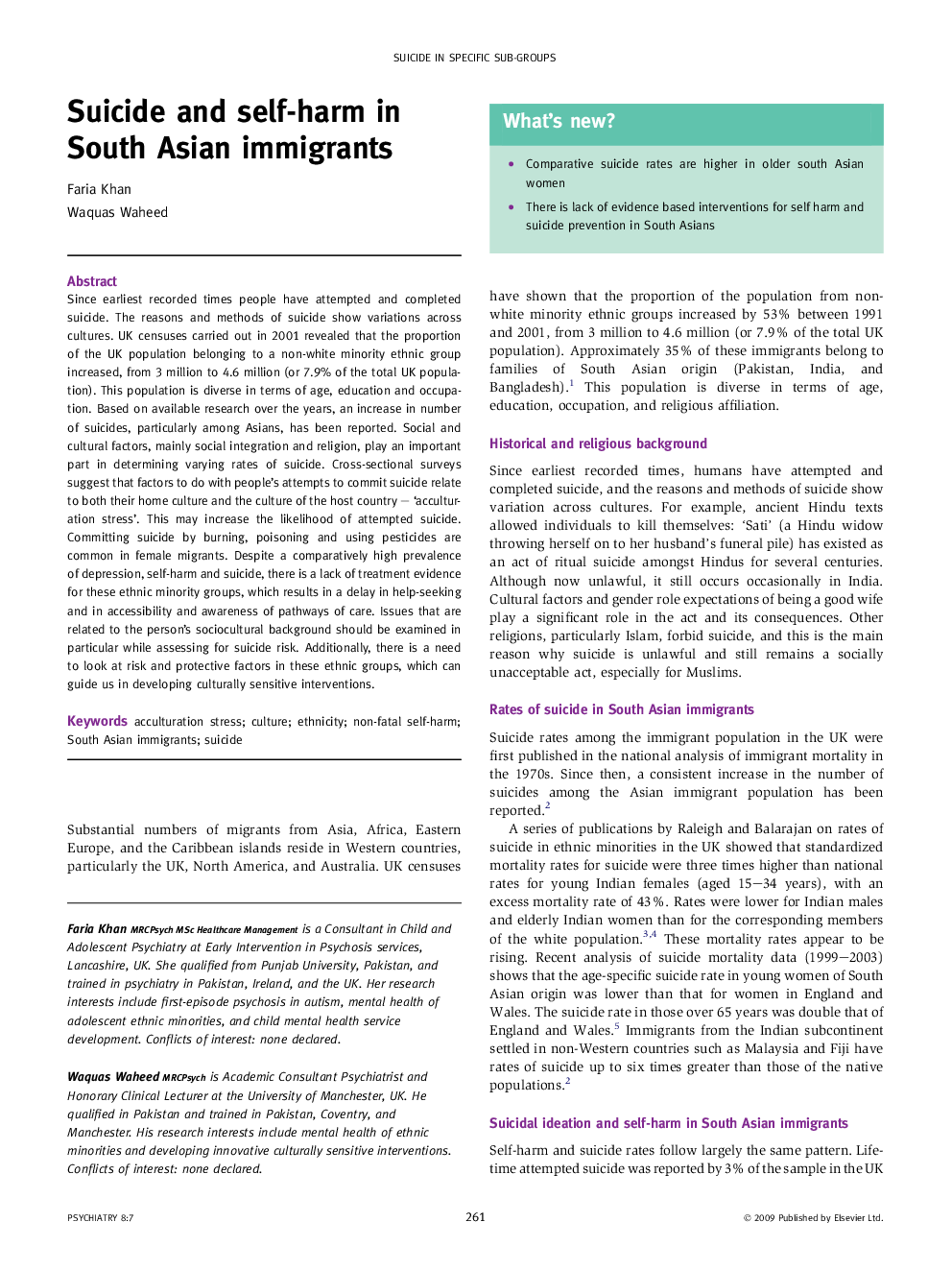| Article ID | Journal | Published Year | Pages | File Type |
|---|---|---|---|---|
| 4189816 | Psychiatry | 2009 | 4 Pages |
Since earliest recorded times people have attempted and completed suicide. The reasons and methods of suicide show variations across cultures. UK censuses carried out in 2001 revealed that the proportion of the UK population belonging to a non-white minority ethnic group increased, from 3 million to 4.6 million (or 7.9% of the total UK population). This population is diverse in terms of age, education and occupation. Based on available research over the years, an increase in number of suicides, particularly among Asians, has been reported. Social and cultural factors, mainly social integration and religion, play an important part in determining varying rates of suicide. Cross-sectional surveys suggest that factors to do with people's attempts to commit suicide relate to both their home culture and the culture of the host country – ‘acculturation stress’. This may increase the likelihood of attempted suicide. Committing suicide by burning, poisoning and using pesticides are common in female migrants. Despite a comparatively high prevalence of depression, self-harm and suicide, there is a lack of treatment evidence for these ethnic minority groups, which results in a delay in help-seeking and in accessibility and awareness of pathways of care. Issues that are related to the person's sociocultural background should be examined in particular while assessing for suicide risk. Additionally, there is a need to look at risk and protective factors in these ethnic groups, which can guide us in developing culturally sensitive interventions.
